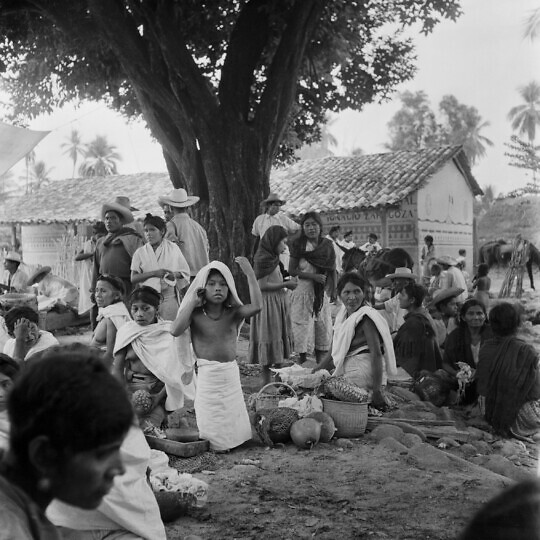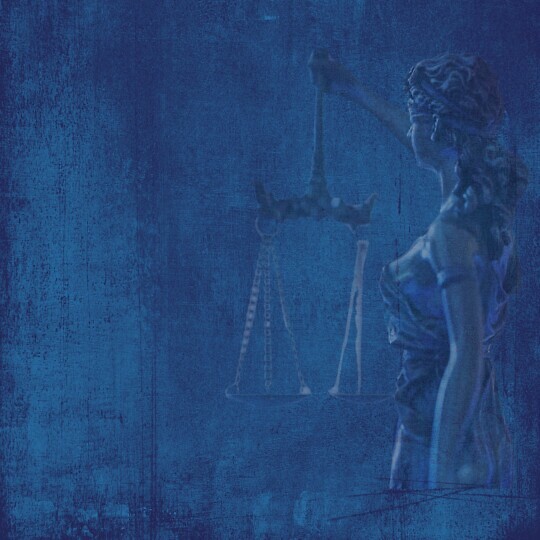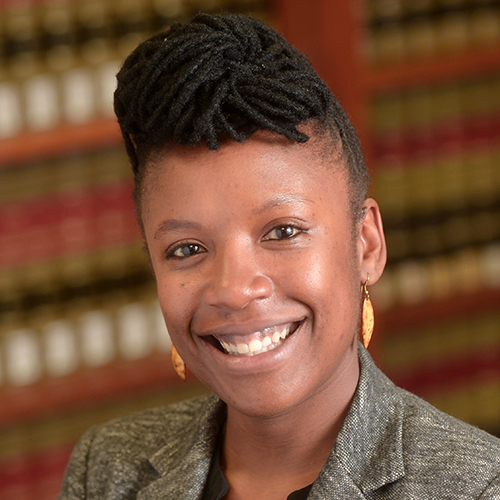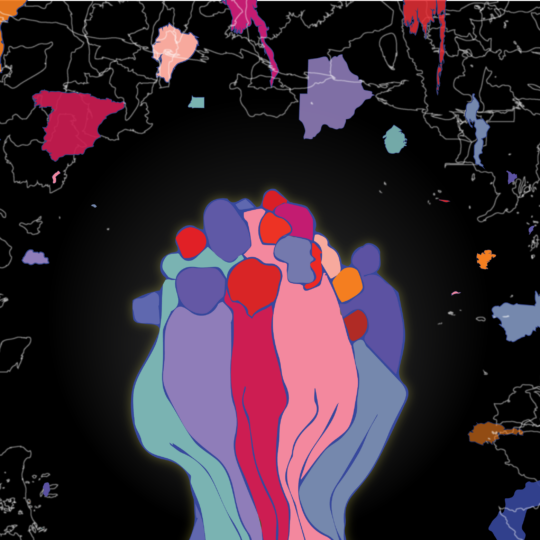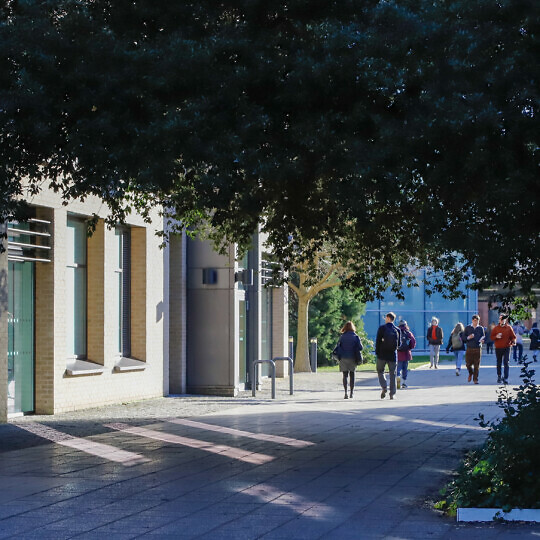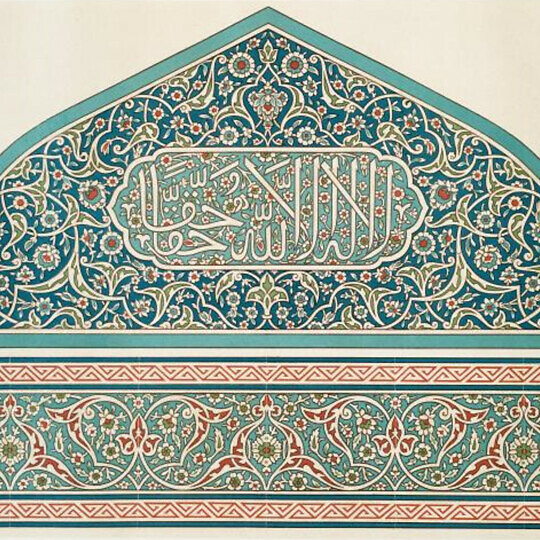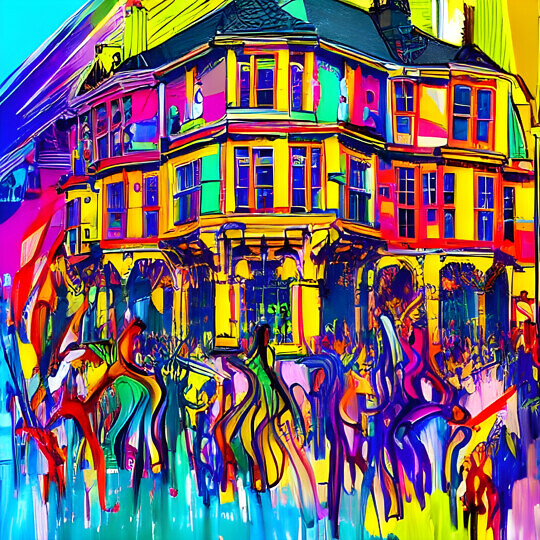| 25 Sep 2014 - 26 Sep 2014 | All day | CRASSH, Alison Richard Building, 7 West Road, CB3 9DT - SG1&2 | |
- Description
- Programme
- Abstracts
Description
Register online via the link at the top right hand side of this page
Conference fee: £50 (full), £25 (students) – includes lunch, tea/coffee
Deadline: Tuesday 23 September 2014
Conveners
Eugenio Biagini (Faculty of History, University of Cambridge)
Steven Uran (Chargé de recherche au CNRS, Paris, France)
Summary
This conference addresses issues currently at the forefront of European politics and collective identities, namely the tendency of major states to fragment, a process which started at the beginning of the twentieth century and has acquired momentum in recent years. It looks at this question in a historical perspective, in a wide geo-political context, adopting a comparative and inter-disciplinary approach.
The debate on political and cultural developments since 1989 has been characterised by a renewed interest in minority studies and the politics of identity. This has involved, on the one hand, analyses of the connection between nation building and what Emilio Gentile describes as the rise of ‘religions of politics’, and, on the other, the debate on Jürgen Habermas’ ‘constitutional patriotism’, as an alternative to ethnic nationalism. The end of the Cold War challenged many assumptions about ‘modernity’, secularisation, and the expansion of liberal democracy. The break-up of the Soviet Union, but especially the descent into war and ethnic cleansing in ex-Yugoslavia illustrated the power of myths, vengeance, and ethnic conflict. In recent years, ‘nation states’ have continued to develop a tendency to fragment into smaller entities, defined by specific religious/linguistic/cultural traditions and Europe has become a continent of small democracies – from the Czech and Slovak republics to Lithuania and Estonia, with other countries, including Belgium, Spain and Britain, edging towards fragmentation.
This conference will address central paradoxes of identity-building in emergent states – the contrast between the resilience of ethnic irredentism with contrasting religious identities, and the aspiration to the creation of viable and economically prosperous states, which demanded the amalgamation of territories and markets into larger entities. Independent statehood not only required institutional design and international security, but also the rewriting of master narratives, the allocation of power resources, the creation of a civic identity under conditions of ethnic and religious pluralism, or the redrawing of contested territorial boundaries. While the conference focus is primarily on Europe, attention will be paid to some parallels that this question finds in parts of the Middle East and Northern Africa.
Keynote speaker: H.E. The Ambassador of Ireland
Sponsors


Supported by the Centre for Research in the Arts, Humanities and Social Sciences (CRASSH), the Trevelyan Fund and the Institut Français.
Accommodation for non-paper giving delegates
We are unable to arrange accommodation, however, the following websites may be of help.
Visit Cambridge
Cambridge Rooms
University of Cambridge accommodation webpage
NB. CRASSH is not able to help with the booking of accommodation.
Image: Army Rolls-Royce Armoured Car Co. Cork 1941, en.wikipedia.org
Administrative assistance: events@crassh.cam.ac.uk
Programme
| Thursday 25 September 2014 | |
| 9.30-10.00 | Registration & Coffee |
| 10.00-12.00 | PART I – THE LOGIC OF PARTITIONISM SESSION I – Self-determination
|
| 12.00-13.00 | Lunch |
| 13.00-15.00 | SESSION II – Communal Violence
|
| 15.00-15.30 | Tea break |
| 15.30-17.30 | PART II – STRATEGIES OF COEXISTENCE SESSION III – 'Dogs which did not bark'
|
| Friday 26 September 2014 | |
| 9.00-11.00 | SESSION IV – Education and Linguistic Capital
|
| 11.00-11.30 | Coffee break |
| 11.30-13.30 | Session V – 'Minority Treaties' and 'Cultural Autonomy'
|
| 13.30-14.30 | Lunch |
| 14.30-16.30 | Session VI – Constitutional Rights
|
| 16.30-17.00 | Tea break |
| 17.00-18.00 | KEYNOTE LECTURE: 'AE Russell and D.P.Moran in 1923: Partitioned Irish Intellects'
|
Abstracts
PART I – The logic of partitionism
Session I. Self-determination
Eugenio Biagini (Sidney Sussex College Cambridge) – ‘Partitionism, ”marginality”, citizenship and the viability of democracy, 1912-2012.’
The process of 'nation building' involves inclusion as much as exclusion, tracing boundaries for imagined communities, as neighbours become either 'brothers' or strangers, while others, who do not fit in with the national ideal, are marginalised, becoming the equivalent of 'domestic aliens'. Democratic rhetoric and the 'sovereignty of the people' in the twentieth century have strengthened these tendencies. The paper examines such features using Ireland as a case study. Starting from the 1912 Ulster Solemn League and Covenant, it explores some of the concepts which have characterised both the rise of democratic legitimacy and the challenge that 'popular sovereignty' may pose to the definition of a 'common good' and even the long-term viability of both citizenship and democracy.
Harald Wydra (Cambridge) – ‘The national sacred in liminal borderlands – Thoughts on Polish messianism.'
This paper outlines different responses of the Polish political imagination in overcoming the absence of statehood before 1918 and in challenging the communist regime before 1989. Polish messianism is understood here not as an ideology or a cultural legacy. Rather, this paper proposes that projects of national sovereignty can be understood as practices of meaningful contingency. The national sacred is not so much a belief-system or a ritualistic practice of collective consciousness but implies changing forms of quests for collective self-transcendence under conditions of liminality and extraordinary politics. The main thrust of this paper is therefore to sketch out a political anthropology of limit situations, which problematises the often paradoxical and simultaneous desire of Central and East European nations to achieve independent statehood and European integration.
Todd Thomspon (Biola University, California) – ‘Ethno-nationalist thought and “organic nationalism” in inter-war British liberal imperial thought.’
This paper will be based on a case study of British elite support for nationalism in the Ottoman and Hapsburg Empires in the early twentieth century. I will treat a group of scholar/activists including R. W. Seton-Watson, Edith Durham, Aubrey Herbert, Gertrude Bell and T. E.Lawrence in the same context in order to evaluate their views on the growing importance of ethno-nationalist thought (what Mandler called “organic nationalism”) and schemes of partition along ethnic or religious lines as a solution to the fall of empires. This essay will help place my work on British support for Arab nationalism in a wider Mediterranean context that includes Eastern Europe and, thus, problematizes the concept of Orientalism in multiple ways. The tentative conclusion being that Orientalism was not an undifferentiated imperial discourse (nor was Balkanism), but rooted in nationalist thought and affirming of ethnicity-based constructions of identity and ethnic autonomy, if not partition and complete self-determination for various ethnic groups, as a solution to the tensions of early twentieth-century empire outside of the British context. The conception of religion and its relation to nationalism in the thought of these writers would also be a central theme.
Session II. Communal Violence
Jochen Boehler (Friedrich-Schiller-Universitaet Jena) – 'Impact of “civil wars” and state building between 1917 and 1923 on societies and individuals in Central and Eastern Europe.’
With the Russian Revolutions 1917 and the surrender of the Central Powers in 1918, Central and Eastern Europe got bogged down in a quagmire of civil and state building wars which until 1923 made the region the most dangerous zone on the continent to live in. These armed struggles arguably affected the region and its inhabitants even more then the preceding years of conventional war and occupation. The paper investigates to what extent the violent experiences of 1917-1923 left their mark on interwar Central and Eastern European societies and groups of individuals (such as military officers, politicians, and intellectuals). This includes the very experience of violence and hardship as well as the relationship of religious or ethnic minorities and the titular nations, and the ascension of authoritarian structures, militarism, and fascist movements.
Tim Wilson (The Handa Centre for the Study of Terrorism and Political Violence, University of St Andrews) – 'Targeting and Resonance in Religiously-Divided Societies, 1918-2012'
Since at least the end of the First World War, a recurrent feature of conflicts over national self-determination has been the rise of ‘tit-for-tat’ conflict patterns in which armed groups select individual victims according to their communal, often ethno-religious, identity. The general effects of this specific approach to targeting can be dramatic, especially if exchanges of violence become reciprocal. ‘The whole atmosphere was vibrating with murder’ observed one Belfast judge simply of one such moment in Northern Ireland in May 1922.[1] Jerusalem in August 1937 was hardly less tense than this: indeed, the Chief Secretary to the Government of Palestine, Sir William Battershill, was sure he would never get used to ‘this loathsome assassination’ – ‘a perfectly innocent Jew shot dead while sitting in a motor bus, and an equally innocent Arab shot dead at close range in the middle of the a residential part of Jerusalem at 10 in the morning’.[2] In a similar vein the following year The Times blamed the continuing ‘apprehensive’ atmosphere in Palestine on what it called ‘the inter-communal game of tit-for-tat’.[3] Visiting eastern Croatia in May 1991, the journalist John Sweeney found local villagers in ‘a spasm of fear’; with one Serb wife ‘fearful of tit-for-tat killings with [her Croat husband] a sitting duck’.[4] Reviewing the situation in central Iraq on 26 June 2005, The Observer noted a ‘low-level, tit-for-tat, sectarian conflict’ the effect of which was that ‘suspicion had crept in where there was none before – even among friends and colleagues who had previously worn their religious identities lightly’.It is worth stressing that in all of the above examples the death tolls from inter-communal violence were still relatively restrained at the time of writing – at most in the tens rather than hundreds (with the exception of Iraq) and certainly absolutely tiny compared to total populations. Yet reliable and independent eyewitnesses reported these societies as characterised by atmospheres of massacre. In other words, small inputs (of violence) had led to total effects (in atmosphere). This paper considers the relationship between the (at least nominally) sectarian or religious nature of communal identities and the phenomenon of limited communal violence that achieves disproportionate effect.
Marko Hoare (Kingston University, London) – 'The former Yugoslavia: self-determination and partition.’
The multinational state of Yugoslavia existed from 1918 until 1991-92, and its history throughout was dominated by trends – whether contradictory or mutually reinforcing – toward national unification, self-determination, secession and partition. The establishment of the state in 1918 was presented officially as an act of national unification, but right from the start, the question was posed of how to reconcile Yugoslav unity with the right to self-government of the constituent lands and peoples. The imposition of a unitary constitutional order by the Serb-dominated parties in 1921 provoked opposition from non-Serb parties, above all Croat, Slovene and Bosnian Muslim; the resulting conflict contributed to the state’s collapse in 1941. Yugoslavia’s reestablishment under Communist leadership in 1943-45 could only be on the basis of multinational federalism, but this opened the question of whether Yugoslav unity would be better protected by tighter or looser federalism – something over which Yugoslavs could not ultimately agree. The regime’s eventual opting for loose federalism from the 1960s, with the concomitant granting of increasingly broad autonomy to the federal units, eventually provoked a Serb-nationalist backlash. Under Slobodan Milosevic in 1990-92, Serbia’s leadership finally answered the rejection by other Yugoslav republics of a recentralised federation by adopting a policy of partitioning them, above all Croatia and Bosnia-Hercegovina, which resulted in the break-up of Yugoslavia and war. Yugoslav unity was lost; the principle of republican self-determination triumphed, but Bosnia-Hercegovina was effectively partitioned in the process, setting the scene for a new national-constitutional conflict that remains unresolved to this day.
PART II Strategies of coexistence
Session III. – 'Dogs which did not bark'
Loughlin Sweeney (Queens' College Cambridge) – “Political Soldiers, Muscular Christians: the Irish Regiments in the British Army and the Home Rule problem, 1886-1914”
In 1886 the British Army was deployed to Belfast after anti-Home Rule riots broke out. At least thirty-one people were killed and hundreds injured. While the army resented aiding the civil power in such incidents, it generally undertook them without protest. When the possibility of a similar deployment was mooted in 1914 however, there was a crisis as officers resigned instead of following orders. What had changed? An examination of Irish officers’ status as political and religious minorities amid the radicalising environment of pre-First World War Ireland, and their imperial context as exemplars of ‘muscular Christianity’, may provide an answer.
Niamh Gallagher (St Catherine's College Cambridge) – 'The imagining of a united Ireland in World War I.'
This paper examines the First World War as a period when political and religious divisions were submerged in Ireland and new social connections were forged across creed, politics, and occasionally class. It will do this through exploring examples of voluntary work in Ireland, relations between Irish soldiers and chaplains at the front, and in Protestant and Catholic responses to death. It is argued that neither religion nor politics were unbreachable barriers to inter-communal cooperation during the Great War as they may have been in previous years. Instead, a very ‘real’ external German enemy forced the Irish to integrate at home and at the front, creating news contexts for social interaction, which helped to break down some of the pre-war politico-religious pillarization. In some cases, the war helped to re-politicize the relationship between Protestants and Catholics in such a way that it inspired the notion of Irish unity. Ultimately, this paper aims to show that politics and creed were not always sources of conflict in Ireland, because other strands of identity, premised upon a common sense of Irishness, held more importance in the environment of world war.
Guido Franzinetti (Department of Humanistic Studies, University of Eastern Piedmont, Vercelliguido) – 'Partitions in East-Central Europe, 1897-1914: Dogs that did not bark (and dogs which did)'
Partitionism is often the first and inevitable step in the process of creation of newly independent nations. However, as often as not, partition is process which does not take place, despite the potential for it in many historic regions. The purpose of this paper is precisely to address the absence of partition in cases in which there were grounds for expecting one. The first part of the paper covers the variety of potential cases of partition in the provinces of Cisleithania in the late Dualist Era (1897-1914, from the Badeni ordinances to the eve of the First World War). Reference will also be made to the case of Upper Silesia in the aftermath of the war. The second part of the paper will address the implications of partitions (and the absence of partitions) in the interwar period and beyond.
Session IV. Education and linguistic capital
Tamara Scheer, (Ludwig Boltzmann Institute for Social Science History/University of Vienna) – 'Regimental languages and their impact on the Nationalitätenfrage or national question of the Habsburg Empire.'
The regimental language was an outcome of the introduction of the common conscription and the Austrian constitution that every soldier received the right to be trained in his mother tongue. The army should become a tool for developing an imperial identity and to train the soldiers in their native languages should help to educate them in this sense. My argument is that the regimental language in the end initiated a different process. It brought the national question straight into the army. Therefore the regimental language deepened diversity more then it helped to create an overall identity. Despite that the language and identity question in the Balkan army units had been almost congruent to the other cases they opened the floor for some specific questions. In the beginning the Habsburg Army knew only Serb and Croat as official languages in Bosnian-Herzegovinian units, but what happened when Bosnian and Serbocroatian were implemented in civil administration? What happened in the Hungarian parts of the Habsburg Balkans, where the Hungarian policy called the regimental languages as working against the magyarization process? Was it really a fight from below till top – regional languages against German or Hungarian – or was it more a struggle for power between the regional languages themselves, e.g. Slovenian against Italian, Croat against Italian, Croat against Serb?
Stella Isaac (Churchill College Cambridge) – 'Education, Class and identity in the self-preservation of the Southern Irish minority, 1922-1937.'
With the creation of the Irish Free State in 1922, political power was won by those in the majority who were both Catholic and Nationalist in outlook. In the years that immediately followed, a nation building mandate was set which had a strong emphasis on igniting a cultural revolution, with schools as a focal point for activity. However, it is argued that this activity did not take account of those minority groups whose ideals were at variance with the afore mentioned majority. This paper takes the educational policy of the Irish Free State as a starting point for examining the relationship not only between the state and the Protestant church, but also, between ‘players’ at a micro-historical level, that is, how the policies and compromises negotiated by the leaders and politicians affected schools, families and pupils.
Miriam Dobson (University of Sheffield) – 'Between demonisation and human rights: Protestant minorities in the USSR, 1945-1980.'
The Soviet government promoted atheism for a number of reasons, not least the materialist basis of its founding doctrines. But atheism also seemed to offer a means to tame the confessional and ethnic diversity which characterized the vast territories inherited from the Russian Empire. During the seventy-four years of the USSR’s existence, a range of different policies were taken towards those who resisted the unifying call of atheism. The arrest, exile, and execution of religious ‘activists’’ was particularly characteristic of the 1930s. From the end of the Second World War the Soviet government took a rather different approach, one we might call ‘pillarisation’: confessional organisations, with their own infrastructures, publications, and finances, were formed. One of these was the All-Union Council of Evangelical Christians-Baptists (AUCECB), formed in 1944, and to which Pentecostals and Mennonites were later added. At various points, AUCECB dignitaries were co-opted to international campaigns and the Union’s existence was used as evidence of Soviet respect for human rights. At the same time, the maltreatment of believers persisted, and – in the case of Protestant minorities – even intensified: the ‘sectarian’ was increasingly presented as violent, irrational, and depraved. In the media, these disturbing outsiders were vilified as outsiders to the Soviet community which, in direct contrast, was orderly and humane. The paper thus explores the tensions inherent within Soviet religious policy which on the one hand demonised religious minorities whilst on the other claimed they were the beneficiaries of religious tolerance. Both tactics used concept of ‘humanity’ but to very different ends.
Session V – 'Minority treaties' and 'cultural autonomy'
David Smith (University of Glasgow) – 'National-cultural autonomy and the construction of political community: insights from the Baltic'.
In the aftermath of World War One and the collapse of empire, the newly-created Baltic States of Estonia, Latvia and (to a lesser extent) Lithuania were unique in institutionalising cultural pluralism according to the principles of national-cultural autonomy (NCA). This approach represented an alternative both to the ‘nationalising state’ and to the more limited minority rights model propagated by the League of Nations. As well as being actively implemented in its original Baltic context, national-cultural autonomy provided the inspiration for a genuinely transnational minority rights movement in 1920s Europe which saw this model as a means to the end of overcoming irredentist politics and forging stable and democratic state communities. The paper will discuss the origins and main tenets of this approach and the reasons why, in the context of inter-war Europe, it was ultimately unable to supplant continued strong trends towards particularist ethnic nationalism. This failure notwithstanding, the practices and debates of the inter-war period should be seen as more than just an interesting historical footnote, at a time when NCA is again becoming a salient feature of state and nation-building processes in Central and Eastern Europe and beyond.
James Kennedy (University of Amsterdam) – ‘The reshaping of Dutch national narratives in the light of an emerging and destabilizing pluralism.’ –
“Pillarisation” as concept was employed by the political scientist Arend Lijphart in 1968 to explain why Dutch democracy appeared so stable despite deep religious and ideological divisions, divisions that should have led to political violence and dissolution. Since then, the modern Netherlands has often served as one (but certainly not the only example) of consociational democracy – one reason, perhaps, to include it in discussions in parallel developments in “emergent” states. How sometimes sharply different religious identities shaped Dutch national identity over time is the focus of this paper. The shifting fortunes of religious groups and estimations of religion in the public sphere prompted sometimes painful recalibrations of national identity which intruded unto domestic politics, not least in the first decade of the twenty-first century. “Protestant,” generically “Christian,” “pluralist” and “secularist” were each highly contested designations of national identity that were informed by the experience with pillarisation and its legacies.
Irina Marin (University of Leicester) – 'Foreigner in One’s Own Country: the partition of the Banat of Temesvár and minority policies in the post-imperial states 1918-1944.'
In 1918 the Banat of Temesvár, one of the eastern provinces of the Habsburg Empire, was divided between three states: Romania, Yugoslavia and rump Hungary. The province had been part of the Habsburg Empire for two hundred years, having been conquered by the Habsburgs from the Ottomans in early 18th century. ‘A chameleon placed on a coloured population-map of the Banat would explode’, was a remark that Patrick Leigh Fermor had heard about the Banat in the 1930s: warfare, colonisations, economic and religious immigration had brought together a most diverse population in a borderland that for a long time was a fault line between Christianity and the Muslim world: Hungarians, Serbs, Romanians, Germans, Bulgarians, Czechs, Slovaks, Roma, Jews, Spaniards, Frenchmen, Italians. The division of the province in the wake of the First World War sought to impose a national rationale onto imperial demographics and inevitably left minorities stranded across borders. The present paper proposes to explore how successful the new states were in integrating their minorities and enlisting their loyalty and to what extent they repeated the mistakes of their imperial predecessors. The paper will examine the problems posed by minority treaties, the discrepancy between what they were intended to achieve and what they actually achieved as well as the hybrid, almost oxymoronic categories that came into being in the interwar period and especially during World War Two to designate religious and ethnic minorities.
Session VI. Constitutional rights
Joost Augusteijn (University of Leiden) – ‘Religion and minorities in the construction of the Irish Free State, 1912-1922.’
This paper will trace and analyse the way the new Irish State, which was constructed in 1922, dealt with religion and minorities. It starts off with an in depth analysis of what role religion played in the violent struggle which lead to the granting of dominion status to southern Ireland. What was the theoretical attitude of Irish Republicans towards the position of religious minorities and how did this work out in practice? It will then focus on the identity formation in the new state by dealing with the formal status of religion and minorities in the Irish Free State constitution of 1922 and trace the treatment of minorities through the first years of the life of the new state until a new constitution was created in 1937 in which the formal status was altered fundamentally.
Stefano Gagliano (Scuola Normale Superiore di Pisa) – ‘Minority rights and religious liberty in the making of the Italian democracy, 1943-1948.’
The present research focuses on the political and ecclesiastical position of Italian Protestant churches and the reasons for the restriction of religious freedom by the government authorities in the period 1943-1948. It is significant that Fascist-time restrictions were kept by the early Republic. The Protestant communities – especially the predominantly working-class Pentecostals – demanded true equality of treatment for all religious denominations. The State's response was instead repression, which denied fundamental constitutional freedoms such as those of speech, assembly and religious proselytizing. these were enforced especially, but not exclusively, in southern Italy and Sicily. Only in the 1950s the Constitutional Court gradually forced the government to repeal legislative restrictions on free preaching. The agreements between the State and religious minority, however, were postponed in the aftermath of the Second Vatican Council.
Steven Uran (CNRS, Paris) – Community and nation on the colonial periphery: the Jews of French Algeria between emancipation and anti-Semitism (1870-1902)
France today has the largest Jewish and Muslim populations of the European Union, a legacy particularly of the 132-year colonial history of French Algeria. The Algerian experience was to have a decisive impact upon all concerned: upon France and its national identity, upon French Algeria, as upon the Jews and Mus- lims who are now the principal non-Christian minorities in the country. Algerian Jews, formerly the inferior minority of the precolonial Regency, were progressively detached from the indigenous Muslim majority and drawn into the colonial polity, ultimately to be made French citizens by decree in 1870. This extension of Jewish emancipation, conducted by the colonial regime in the multi-ethnic and multi-religious setting of Algeria, compounded the conundrums and ambivalences of the process originating in metropolitan France. The grant of the rights of citizenship to Algerian Jews occurred in the midst of a profound crisis defined by French defeat by Prussia, the fall of the Second Empire, the inception of the Third Republic and the ascendancy of the Republican settlers, and the most traumatic Muslim insurrection to date. In this cri- sis the first organized anti-Semitic movement appeared, the forerunner of others which came to dominate Algerian colonial politics at the turn of the century. This paper focuses on how the colonial experience forged Algerian Jewry, and how their emancipation together with the colonial anti-Semitism which ac- companied it, were central to the politics of identity in French Algeria.

